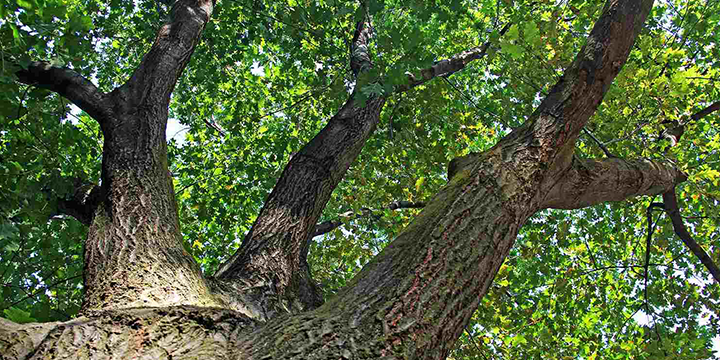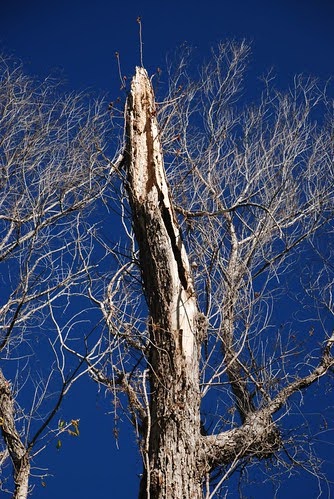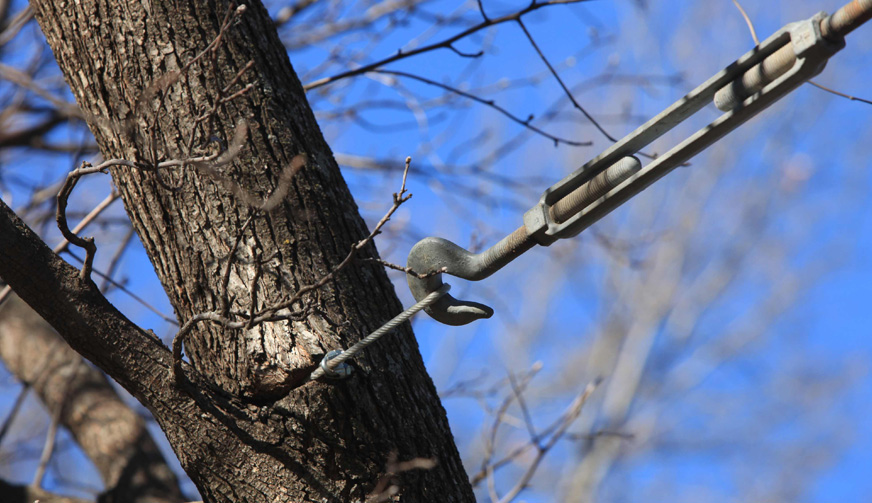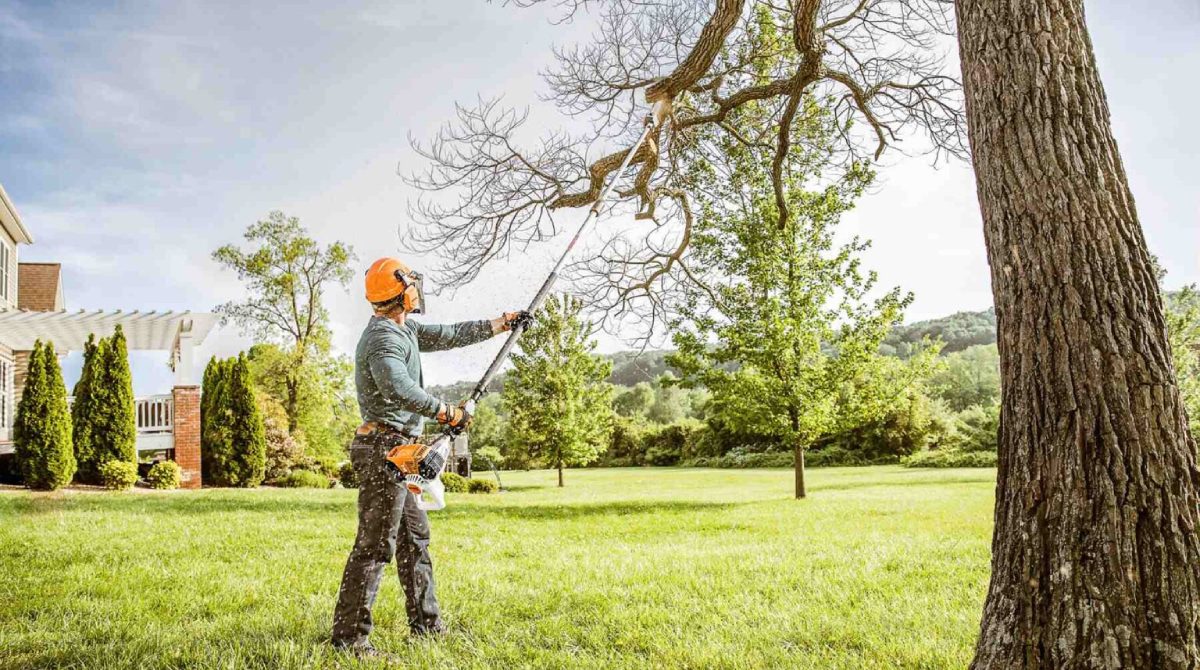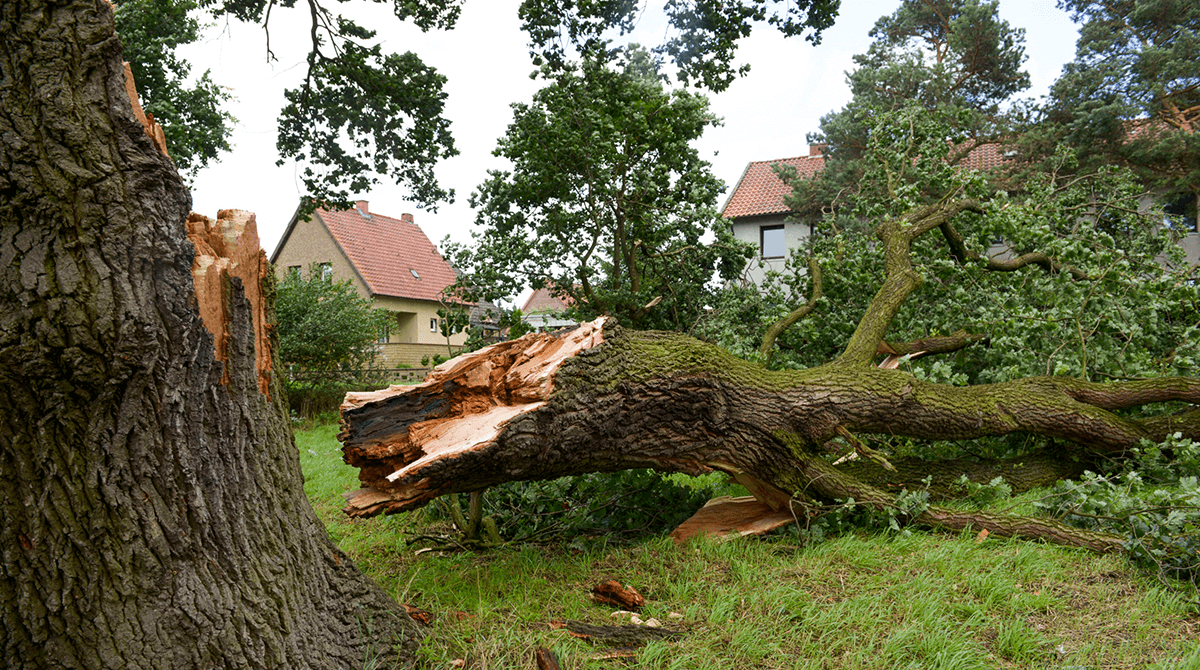
Dallas-Fort Worth Post-Storm Response and Tree Care
Date June 01, 2021
Category
In Dallas-Fort Worth, it’s not uncommon to see serious thunderstorms with hail and strong winds or even tornado warnings looming across our TVs or phone screens. The effects of these storms on our landscaping can be devastating. Trees that are already weak because of underlying health issues or haven’t been pruned properly and therefore have poor canopy structure are especially susceptible to damage. Below are some Dallas, Texas tree care tips for how you can take care of your trees after big storms to minimize damage.
How do I know if my tree was damaged?
Some North Texas property owners are still dealing with the winter storm’s effects on Texas in February. That’s because sometimes it takes several months before trees show the full extent of the damage they’ve received. After a severe storm, you should monitor your trees carefully to assess any signs of damage. Look for bulging bark, dying limbs, or lack of foliage. If sections of your tree didn’t leaf out this spring, that should be cause for concern. If you’re not sure if your tree has been damaged, then you should contact a certified arborist to visit your property and assess your tree.
My tree was damaged in a storm. Now what?
If you have a tree or multiple trees on your property damaged in a storm, the good news is that trees are usually pretty resilient. However, you should call an ISA Certified Arborist as soon as possible if you think or know that your tree has been damaged. I attended to quickly and correctly. A tree can survive certain damage. Even if as much as one-third of the canopy has been lost, there’s a chance a healthy tree can eventually recover with proper care. However, if a tree has lost more than half of its canopy, if it has lost multiple major limbs or has been split in half, then there’s a good chance the tree will need to be removed.
It’s just a little damage. Should I still call a professional?
Not all damage is obvious to an untrained eye, so if you think your tree has been damaged at all, then you should call a trained tree care professional to assess your tree. When adverse environmental conditions like harsh weather damage trees and shrubs, it causes them stress. If left unattended, the damage alone could eventually kill your tree. But even if the damage doesn’t kill your trees or shrubs, it compromises their health and makes them vulnerable to secondary problems like pests, fungus, or disease, which in turn could deal your trees or shrubs a fatal blow. Keeping your trees healthy is the key to improving their long-term sustainability.
What should I do if my tree has broken branches?
Broken branches will need to be removed, and if they’re posing a safety risk — such as hanging precariously over your house or yard — then they should be removed quickly and very carefully. The removal of dead or damaged branches can be hazardous and should be done by a professional who has the tools and knowledge to remove them safely. Even if you think the damage looks straightforward, sometimes storm-damaged trees have internal rips and tears that you might not see. TreeNewal’s tree surgeons are available to help with pruning, trimming, tree and trunk removal. Give us a call today to set up an appointment.
What if I want to plant a new tree to replace the old one?
If you lost a tree and you’d like to replant, there are some things you should know about tree planting before you get started. If the trunk of the old tree has been removed or ground down and you’re planning to plant the new tree in the same spot, there are two important things you should consider: that you’ve chosen the right tree for the location and that you plant the tree the right way.
- The right tree for the location: When determining the best tree for the location, pay careful attention to how large the tree will be at maturity. Some Texas trees grow quite large, making sure you’re choosing a suitable tree for the space you have available. Be mindful of buildings. Whatever the expected width of the tree’s crown, cut that number in half, and that’s how far you should plant your tree away from any buildings. Look out for overhead utility and power lines. Other things to consider are the drainage, the exposure, and the soil. Examine the soil to check the quality and determine if it is the right fit for the tree you’ve chosen or if it needs to be amended.
- Plant your tree the right way: When you plant your new tree, you want to be sure not to plant it too deeply. First, identify the tree’s trunk flare, where the trunk expands at the tree’s base. The trunk flare should be peaking out of the soil, so the hole you dig should be two to three times as wide as the root ball of your sapling, but just deep enough that the trunk flare will be partially visible once planted. After you place the tree in the hole, ensure that it’s straight before backfilling. Stabilize the tree by packing dirt around the root ball and removing any wrapping, string, or wire. Continue to backfill the hole gently but firmly. You want to avoid creating air pockets in the soil, which could dry out the roots, so use water to settle the soil around the root ball.
- After planting care: Don’t fertilize the soil during planting, but do mulch once the hole is sufficiently backfilled. When mulching, spread a layer of organic matter on top of the soil, starting a few inches away from the trunk flare. The layer of mulch only needs to be two to four inches thick. Anything more than that could cause issues with moisture and oxygen levels in the soil.
- After a few years of establishment, young trees need to be pruned and trimmed to develop the correct structure during their juvenile stage of approximately 10 years. However, this needs to be done in a very particular way, so consider working with a certified arborist who understands proper structural pruning and other healthy pruning techniques.
TreeNewal’s ISA Certified Arborists are here to help!
If you have questions about post-storm tree care, TreeNewal is a certified arborist tree service with multiple ISA Certified Arborists on staff and a team of highly qualified tree care experts. If you need professional tree care, our certified arborists can make knowledgeable recommendations for optimizing your tree’s health before and after storms. We care about tree health care at all stages of the tree life cycle. We are experts on both young and mature Texas trees, and we offer a variety of expert tree care services, such as tree trimming and pruning, pest and disease control, root aeration, and tree removal in Texas. For more information about our tree care services, go to our website at treenewal.com. To set up an appointment, call us at tel:(817) 592-6846.
To learn more about the Dallas-Fort Worth Post-Storm Response and Tree Care, call our Argyle and Southlake-based teams
at tel:(817) 592-6846 or send us a message.
We’re a little different than the average tree services company.
Learn more about TreeNewal’s ISA Certified Arborists!
Our Dallas/Fort Worth-based tree doctors can explain how sustainable tree care services add more value to your bottom line.
Healthy trees, healthy lives.
